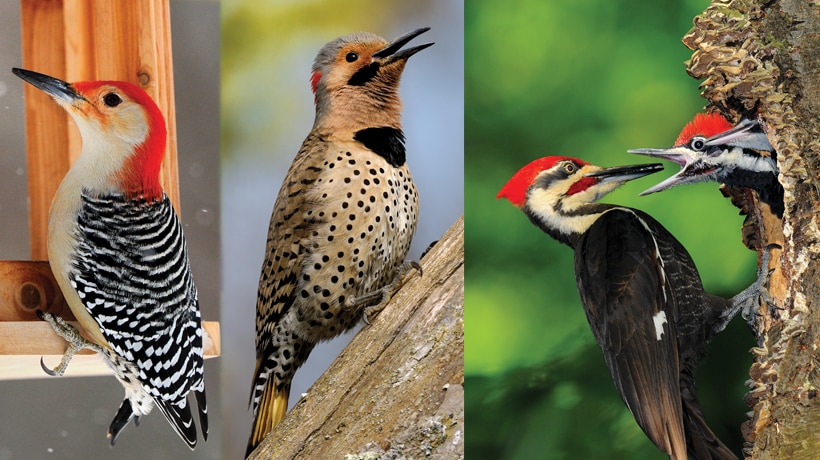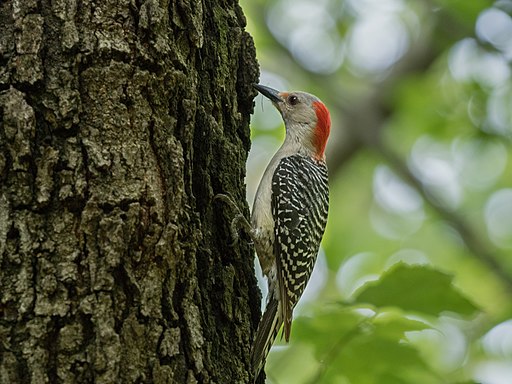Woodpeckers Unleashed: Discovering the Marvels of These Proficient Tree Climbers
Woodpeckers, with their unique markings and balanced drumming echoing via wooded areas, hold a special location in the bird globe - Woodpeckers in Florida. As we dive into the detailed details of woodpeckers' nesting behaviors, feeding techniques, and the ongoing conservation efforts to protect these impressive birds, a deeper appreciation for their place in nature unravels.
Anatomy and Adaptations
When analyzing the makeup and adjustments of woodpeckers, one can observe remarkable features that make it possible for these birds to thrive in their specialized eco-friendly specific niche. Woodpeckers are outfitted with a collection of one-of-a-kind physiological features that help them in their woodpecking habits. Among one of the most prominent attributes is their strong, chisel-like beak, which is specialized for boring into timber to uncover bugs or create nesting cavities. This beak is sustained by strong neck muscle mass and a highly created head framework that acts as a shock absorber, allowing woodpeckers to repeatedly peck at trees without triggering mind injury. In addition, woodpeckers have zygodactyl feet, with 2 toes facing onward and 2 facing backward, giving a company hold on tree trunks while they look for food or drum for interaction.
Furthermore, woodpeckers have an unique tongue structure that is long, barbed, and sticky, allowing them to extract pests from holes in timber. This customized adaptation permits woodpeckers to exploit a food resource that is unattainable to lots of various other bird types. In general, the composition and adaptations of woodpeckers showcase the exceptional transformative options that have actually permitted these birds to grow in their arboreal environment.
Drumming Actions
Having actually discovered the anatomy and adaptations of woodpeckers, the focus currently shifts to understanding their drumming behavior, a distinct facet of their interaction and territorial displays. Drumming is an essential type of interaction amongst woodpeckers, serving multiple objectives such as establishing areas, drawing in companions, and signaling alarm system. Each woodpecker species has an unique drumming pattern that aids individuals acknowledge participants of their own varieties and identify them from rivals or predators.
Woodpeckers generate drumming sounds by swiftly pecking on powerful surfaces such as dead trees, energy poles, or also steel things, producing a series of rhythmic beats. The strength and speed of drumming can from this source vary based on the objective; as an example, a quick drumming sequence may signify aggressiveness towards intruders, while a slower and softer drumming pattern could show courtship (Woodpeckers in Florida). In addition, woodpeckers might readjust the regularity and period of their drumming to share details messages effectively
Nesting Behaviors
Exploring the nesting practices of woodpeckers reveals fascinating understandings right into their reproductive behaviors and habitat selections. Woodpeckers are understood for their one-of-a-kind nesting choices, usually excavating tooth cavities in trees to produce protected spaces for increasing their young. These tooth cavities offer not only as a nesting site but additionally as a secure refuge from predators and inclement weather.
Woodpeckers display a high degree of fidelity to their nesting discover this sites, usually returning to the very same location time after time. This behavior highlights the importance of ideal habitat schedule for their reproductive success. The selection of a nesting site is crucial for woodpeckers, with click now variables such as tree species, elevation, and decay phase playing significant functions in their decision-making process.
Interestingly, some woodpecker species are recognized to dig deep into numerous cavities within their territory, offering themselves with alternative nesting alternatives. This technique may serve as a form of insurance coverage versus possible risks or disturbances to their primary nesting website.

Feeding Techniques
One of the most distinct feeding actions of woodpeckers is drumming, which entails fast pecking on trees to reveal insects underneath the bark. Woodpeckers are likewise recognized to dig deep into cavities in trees to gain access to covert insect larvae or sap. Some types, like the acorn woodpecker, shop nuts in specially created openings called granaries.
Preservation Initiatives
Amidst the intricate feeding strategies exhibited by woodpeckers, the preservation efforts focused on safeguarding these interesting birds play a crucial duty in preserving their habitats and populaces. Woodpeckers encounter numerous dangers to their survival, including environment loss due to logging, environment modification altering their ecosystems, and accidents with man-made structures such as buildings and automobiles - Woodpeckers in Florida. Guardians are actively working to resolve these obstacles and ensure the long-lasting health of woodpecker varieties

Education and public understanding projects are also essential components of woodpecker conservation initiatives. By increasing understanding concerning the relevance of these birds in maintaining healthy and balanced woodland environments, conservationists can gather assistance for habitat conservation initiatives and promote responsible land monitoring methods. Through collective efforts in between scientists, policymakers, and regional neighborhoods, we can work together to secure a future where woodpeckers prosper in their all-natural environments.
Verdict
